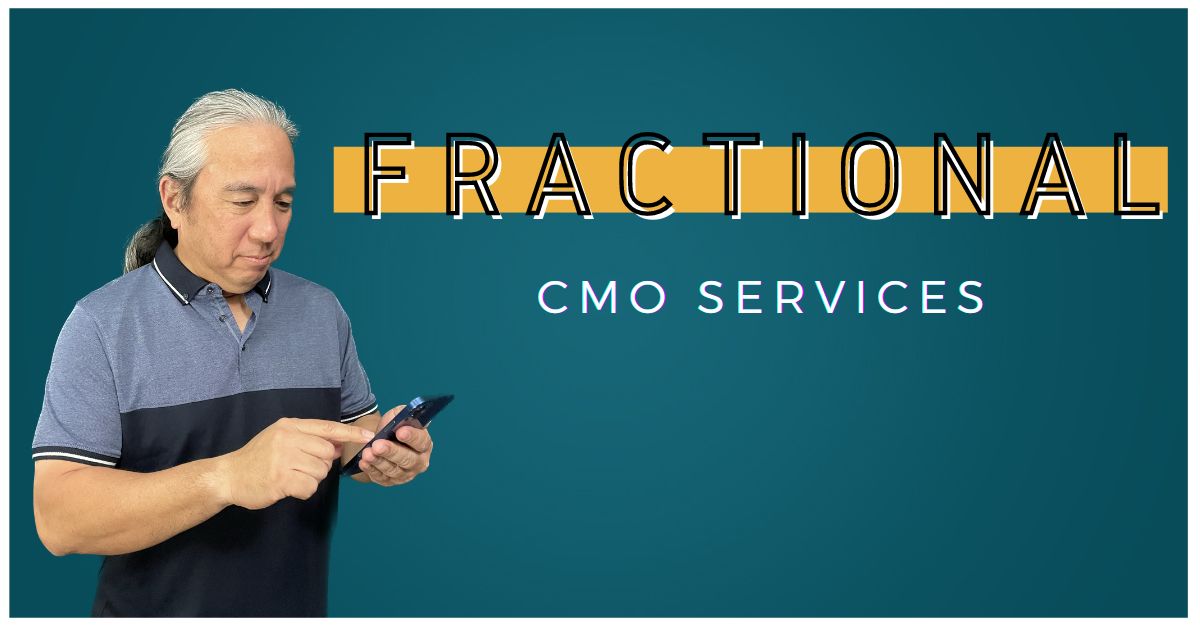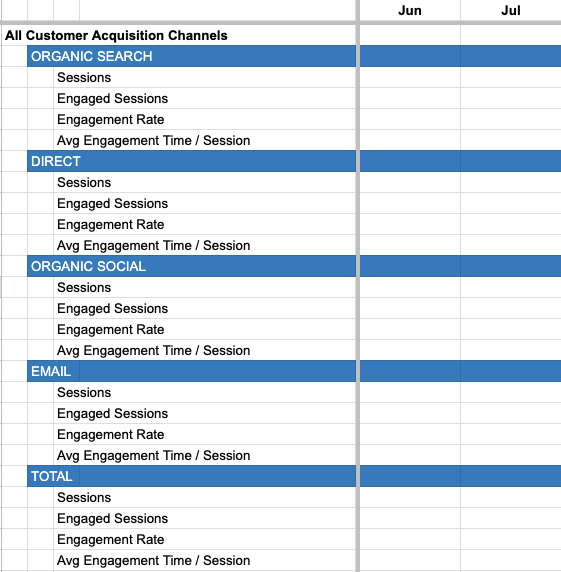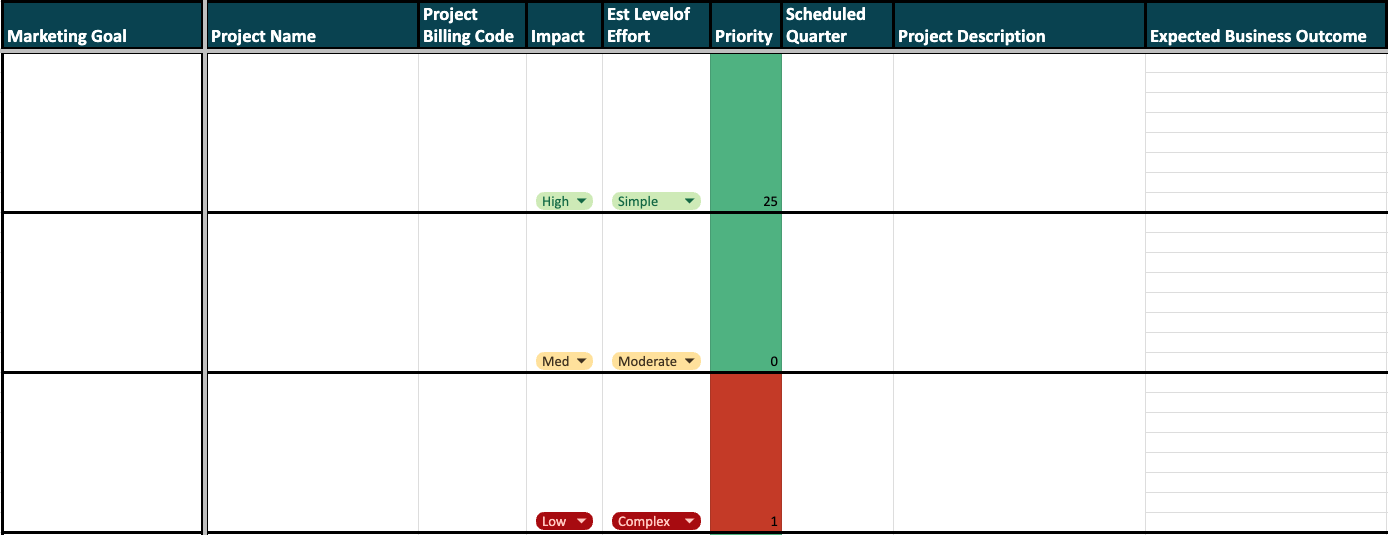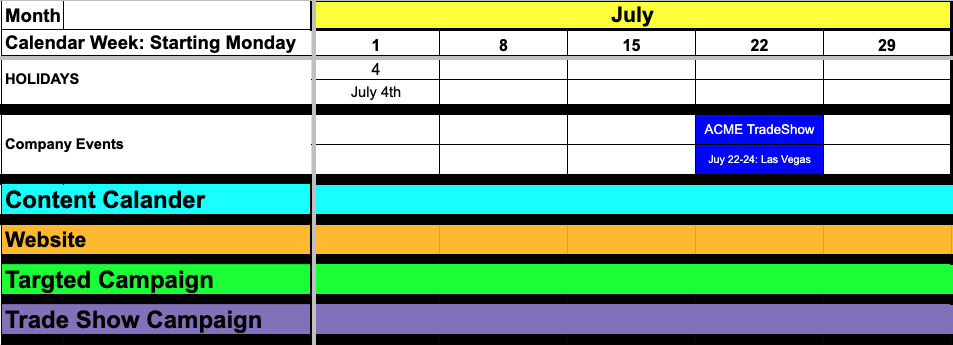14 min
How a Fractional CMO can help your company grow faster
By David Lee

In today’s digital economy, where everyone, including B2B buyers research before they buy, the companies who create and implement the right website and marketing strategies to attract, educate and retain their clients, wins.
A Fractional Chief Marketing Officer can help you get the results you need faster.
You need an expert who can help you:
|
Create Strategy Get the holistic approach you need to get the most from your digital assets to drive qualified traffic, engage visitors and qualify leads. |
Drive Implementation Put in the governance process to focus on the projects that have the biggest business impact and are the easiest to implement. |
Adapt based on data Its not enough to collect data and make pretty dashboards. You need someone to analyze the data, understand what it means, and make decisions based on data to get you results faster. |
What is a fractional CMO?
A Fractional CMO is a part time marketing executive who works with the marketing and sales team to drive new customer and revenue growth.
With years of experience in strategic consulting, crafting impactful campaigns, and optimizing processes, CMO's leverage a diverse skillset. This includes data analysis, market research, and web design expertise, all honed to generate traffic and leads.
But a good CMO also needs more that just marketing experience; a good executive officer also has a healthy dose of business consulting experience. This allows them to craft comprehensive marketing strategies that align with a company's overall business objectives.
Growing companies typically turn to a part-time CMO when they need a business leader to help craft website and marketing strategies, but do not want or need the expense of a full-time executive.
Fractional CMO Services
The job of an outsourced CMO is to develop, execute and monitor the right website and marketing strategies to move the revenue needle.
There are different approaches and processes that a CMO can bring to your company. Rather than describe the roles and responsibilities of a fractional CMO in general terms, here is how I run the fractional CMO service offering at Do What Works.
First, when you partner with Do What Works for Fractional CMO services, you will be working directly with me, as your outsourced CMO and not a company who "assigns" a CMO to you.
My guiding principles of being a fractional CMO are:
-
Work with your existing marketing team and outside agencies to provide strategic marketing guidance.
-
Implement and/or improve the processes of your marketing department including: governance, reporting, and decision making.
-
"Work myself out of my job". My tenure as your fractional CMO should be a temporary one, lasting between 12 to 24 months.
By that time I will have either 1) Implemented processes so that your internal marketing team is self-sufficient or 2) your company has grown to the point where a full time CMO is needed.
My Part-Time CMO services include the following five key activities.
1) Marketing Department Performance
On a quarterly basis, I review your Google Analytics, HotJar (or other heat mapping software), social media accounts, website content and keyword performance to understand what is working and what is not working with your website and marketing tactics.
There are two documents I use to track the performance of the marketing department
Digital Marketing Dashboard (DMD)

The DMD is how I analyze the performance of the website and customer acquisition channels. Each major source is tracked in for traffic generation and engagement.
Lead Acquisition Cost (LAC)
The Lead Acquisition Cost shows the cost per lead.
Many external agencies only measure the ad spend which is fine to measure this metric from a marketing perspective.
But from a business standpoint, its also important to include the direct labor cost (the amount of money spent with an external agency).
This allows me to measure and analyze the Total Cost of each marketing activity to determine the best allocation of funds and resources.
Combined these two dashboards allow me to analyze the data, track results against business goals and measure the return in investment on in-flight marketing projects.
2) Develop Quarterly Website and Marketing Campaigns
When it comes to Digital Strategy, there are two main components:
-
Conversion - is the website engaging visitors and turning visitors into customers?
-
Traffic - which customer acquisition channels are working the best to bring in qualified leads?
Based on my quarterly analysis of the DMD and P&L, I create marketing campaigns to either: improve the performance of your website or increase the qualified traffic to your site.
Improve Website Performance
Often known as Growth Driven Design (GDD) in the Hubspot community, improving website performance is the best practice of analyzing how your actual visitors are behaving on your website and make changes to optimize performance.
Website Conversion Optimization
Working with the web development team, I determine where are the friction points in the website based on actual user behavior by reviewing google analytics, hot jar (heat mapping software) and CMS reports. The goal is to streamline the conversion process and encourage visitors to fill in a form, make a phone call, initiate a chat or send an email.
Website enhancement
Based on the Project Governance List (see below), I coordinate and work with the business and web design team to prioritize, scope and implement new requirements, features and functionally of the website
Website engagement
Working with the SEO and Content Marketing agencies, I look at the engagement data on web pages and blog articles to determine which content should be updated to improve read time, time on site and pages viewed. We want to make your site "sticky".
Improve Customer Acquisition Channels
The there several marketing methods that bring in qualified traffic to the website. Often this means hiring marketing experts who can run successful marketing campaigns including:
-
Content Marketing
-
Pay Per Click
-
Video
-
Social Media campaigns (including LinkedIn, Facebook, Instagram)
-
Account Based Marketing
3) Program Management Office
It's quite common for the marketing department to be overwhelmed with project requests ranging from email mail campaigns, trade show campaigns, website updates, traffic generation, SEO and content writing.
As part of my monthly CMO tasks, I document campaign ideas from various stakeholders, including outside vendors. Then, on a quarterly basis, I prioritize them by identifying which projects provide the biggest value within the marketing budget.
Then, I work with senior leadership to identify the Key Performance Indicators (KPIs) that will be used to measure success and get funding approval.
Finally, I work with external agencies to get bids to execute the campaigns.

Establishing and running the Program Management Office is an essential task of the Part Time CMO because it makes sure that the right projects are approved for implementation, external agencies understand the scope, results are tracked and outcomes are being achieved.
4) Manage External Vendors and Agencies
A major responsibility of a fractional CMO is managing external agencies to make sure that your company is getting value from the work that is performed
I use Google Sheets (or Microsoft Excel) to create the Website and Marketing Calendar to track project status and key dates when coordinating with different agencies, here is an example:

Although this is a manual process, it is simply not worth the effort and time to “gracefully” integrate all of the different project management system such as Monday, Teamwork, Asana or Clickup into a custom dashboard. This is especially true if I need to add or remove agencies and resources for either performance reasons or if I need to switch tactics for the quarter.
If my client has a marketing manager, then I usually advise that it is best to have the internal resource manage and coordinate with external marketing agencies. In this case, I serve as a mentor, setup the processes, train the marketing manager and serve as a guide.
It is important to note that a CMO is not a project manager, but is more of a program manager who makes sure that the resources hired to execute the marketing strategy are hitting their KPI targets and are delivering results. I depend on the external agencies to manage their internal resources, timelines and milestone dates.
5) Research current market and business trends
A large part of my responsibility is to also keep pace with chances in the economy, marketing trends and tactics.
I make it a point to carve out “quiet time” every Friday to research and read from creditable and leading business publications including, Gartner and McKinsey as well as marketing companies including Search Engine Journal and CMO Survey.
Hiring a Fractional CMO
Choosing to outsource a key position in your leadership team needs to be evaluated carefully. Typically companies choose to outsource because they do not have the organizational expertise in house. However there are other important questions to ask:
Why hire a fractional CMO?
It makes sense to hire a fractional CMO when it is clear that your marketing efforts are not organized or producing the results you need. You need someone who can:
-
Define your company Website & Marketing Strategies
-
Turn those strategies into action and results
-
Create a reporting and analysis process to make data driven decisions.
In other words, you need someone who can build a marketing machine that works with sales to grow your company.
What to look for in a fractional CMO
A good CMO has years of hands-on experience of being a marketing manager, a web developer or marketing consultant to give him/her a solid foundation to create strategies that work. Ideally the CMO also has experience in the business consulting industry or at the senior management level and knows how to lead teams, understands business processes and navigate the politics within a company and with external vendors and agencies.
The table below highlights the major differences in experience between an in-house CMO, Marketing Management Marketing Agency, and a fractional CMO.
| In House CMO | Marketing Manager | Marketing Agency | Fractional CMO | |
| Business Consulting mindset and experience | Yes | Sometimes | Sometimes | Yes |
| Executive Experience | Yes | Sometimes | No | Yes |
| Executive Team | Yes (Full Time) | No | No | Yes (Part Time) |
How is a fractional CMO different from a marketing manager or marketing agency?
Typically a marketing manager manages teams, serves as customer advocate, provides administrative support and sometimes executes campaigns, depending on his/her experience.
I’ve typically seen marketing managers write blogs, update website content and post on social media. However, they are usually not responsible for creating the company marketing strategy or analyzing data.
Marketing agencies are usually the implementation and tactical teams brought in to execute the strategy. They are usually experts in one or more disciplines such as:
-
Graphic design
-
Web Design
-
Web Management
-
Coding
-
SEO
-
Content Management
-
Pay Per Click
-
Social Media
Their main focus is to do the work necessary to hit the strategic KPI targets that the CMO sets.
The chart below illustrates the major differences between these roles.
| In House CMO | Marketing Manager | Marketing Agency | Fractional CMO | |
| Analyze data, business goals & market trends | Yes | No |
Limited Within their scope of work |
Yes |
| Develop Website & Marketing Strategy | Yes | No |
Limited Within their scope of work |
Yes |
| Manage Governance process for projects & campaigns | Yes | Yes |
No |
Yes |
| Serves as Customer Advocate | Yes | Yes | No | Yes |
| Services as Project Manager | No | Yes | Yes | No |
| Implement & execute campaigns and tactics | No |
Sometimes As a generalist, the marketing manager may from time to time execute tasks including content creation or social media posts. |
Yes Within their scope of work |
No |
| Manages Team / external vendors | Yes | Yes |
Limited For agency's team members |
Yes |
Cost of a fractional CMO
Of course, the answer is “it depends”. Part Time CMO services with Do What Works runs between $8k and $15k per month, depending on the size, complexity and goals of the company.
One of the biggest reasons to bring on a fractional CMO comes down to cost. According to Salary.com
The total compensation package for a CMO is $652,155 per year
- Base Salary: $357k
- Bonus: $169k
- Benefits: $126k
Two additional factors you should consider if you decide to in-house a Chief Marketing Officer:
- On the average it takes 76 days to replace a CMO and executive search firms can charge 33% of the candidate’s first year compensation. The time and cost of finding a full time CMO can get pretty expensive
- The average tenure of a CMO is about 3.3 years, according to the Wall Street Journal.
How to get started with Do What Works, outsourced CMO services:
|
Step 1: Discovery Call This is a one hour call for you to share your challenges and opportunities for revenue growth. |
Step 2: Statement of Work The CMO statement of work is divided into two phases. Phase 1 (First 30 days). This is a trail period for both of us. At the end of 30 days, I will present my key findings and a decision matrix for moving forward. If we decide we are not a good fit, then the decision matrix and data reports are yours. If we decide to keep working together, we will sign a Phase 2 for the next 11 months. |
Step 3: Let’s go! Once I receive payment and get access to your MarTech stack (website, analytics, etc), I get to work on analyzing your data and current projects. |
Apply for your Discovery Call

Leveraging 20+ years of experience with Fortune 500 companies including Toyota, Beckman Coulter, and Deloitte, I craft data-driven website and content strategies to help companies compete and win in the digital age. Explore my insight articles to learn what works and how to craft winning strategies and tactics to move the revenue needle for your company.